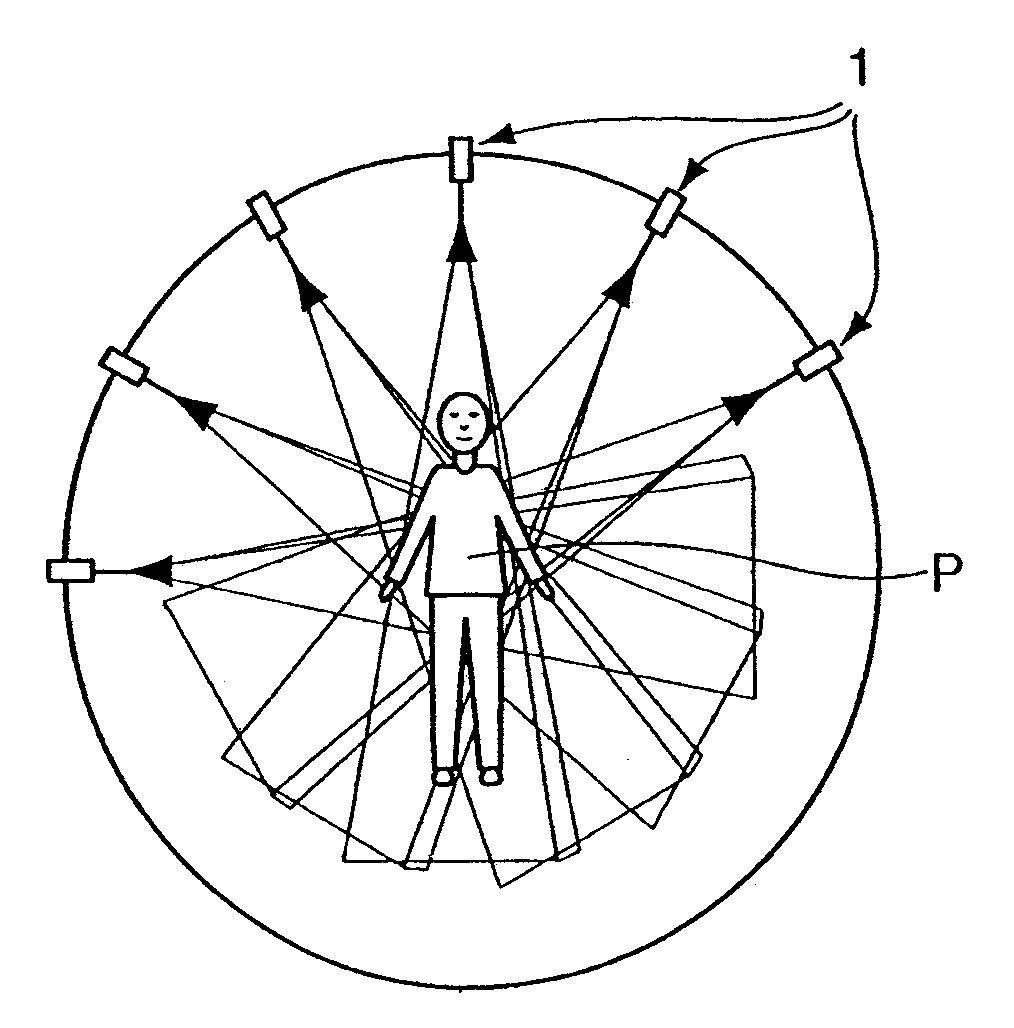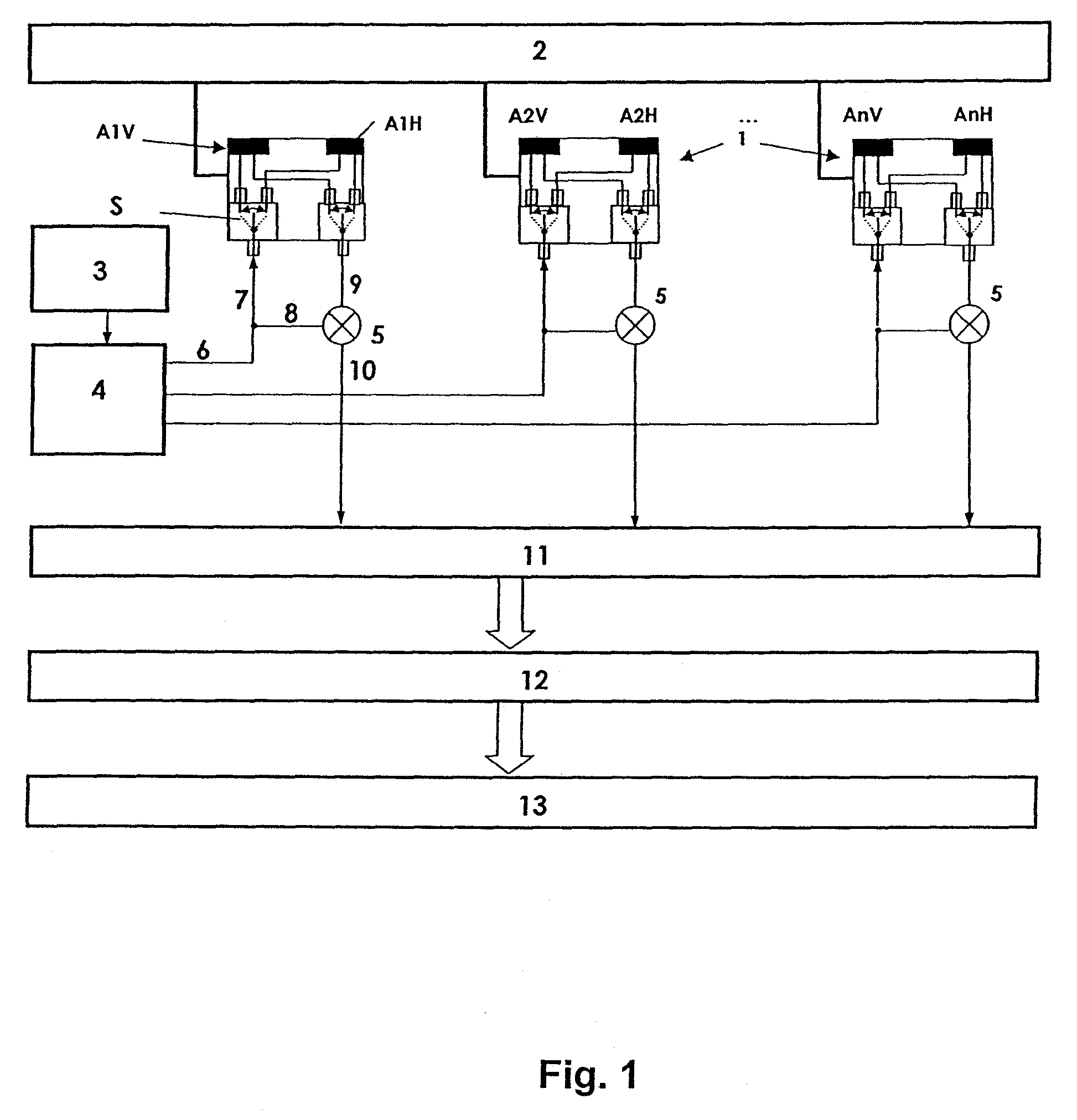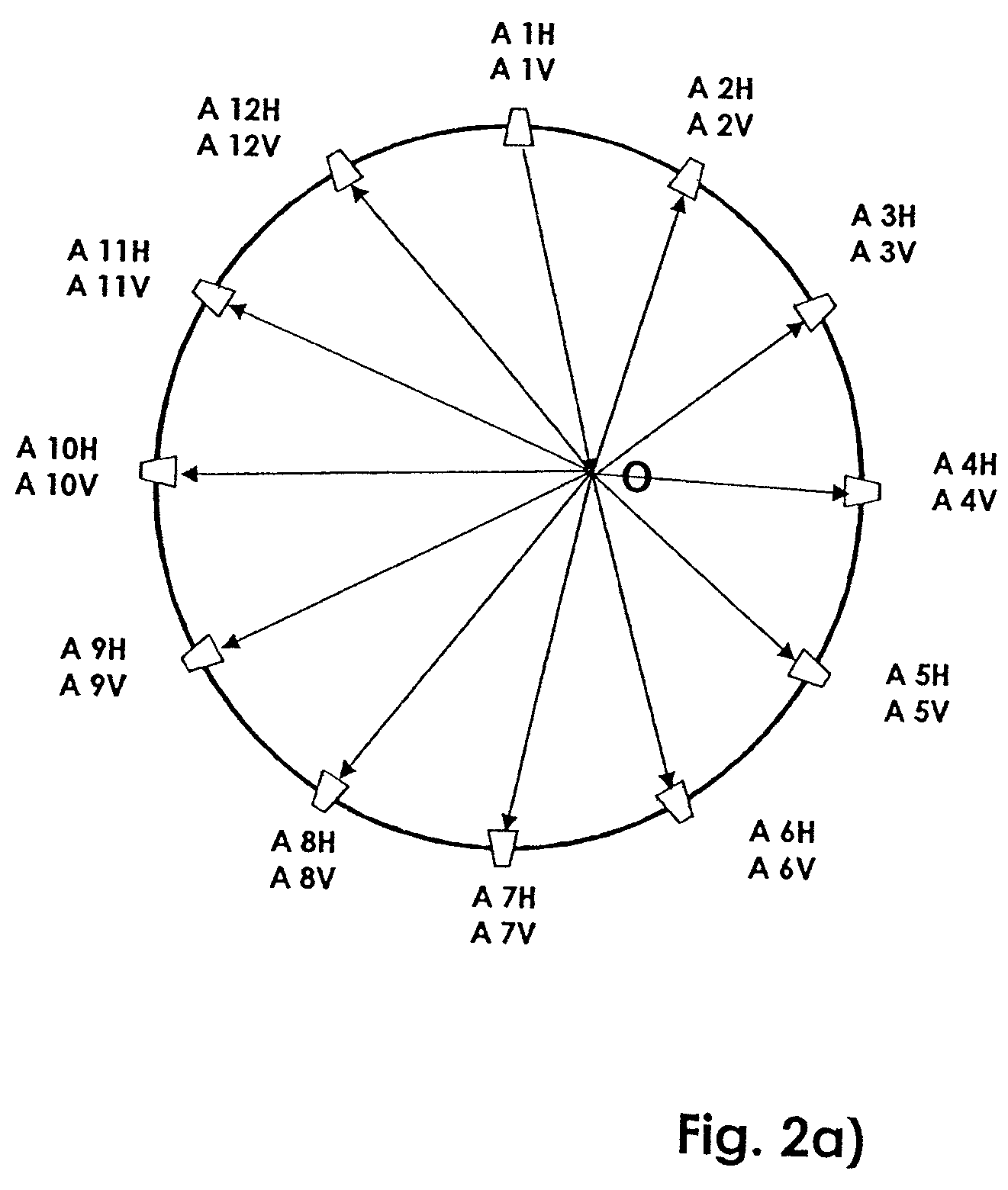Method and device for the spatially resolved detection and reconstruction of objects by means of microwaves
a technology of spatial resolution and detection and reconstruction, applied in the direction of measurement devices, radio wave reradiation/reflection, using reradiation, etc., can solve the problems of limited resolution capability of conventional microwave methods, object motion must be preserved, and apparatuses of this kind are extremely complex in mechanical terms, so as to achieve the effect of improving the accuracy of analysis
- Summary
- Abstract
- Description
- Claims
- Application Information
AI Technical Summary
Benefits of technology
Problems solved by technology
Method used
Image
Examples
Embodiment Construction
[0030]FIG. 1 shows one possible configuration of an embodiment of a microwave antenna unit that enables improved object capture and detection. The embodiment is based on a novel measurement approach using a sequentially actuated transmitter array with a distributed aperture in combination with switching individual antennas to enable time signals to be measured more quickly and more accurately, and special signal processing and image reconstruction technique.
[0031]The microwave antenna arrangement essentially has the following modules:
[0032]A plurality n of individual microwave antenna units 1, each having two transmitter / receiver antennas. The two antennas have opposite polarization to each other which is preferably a horizontal and a vertical polarization. In the following, reference characters AiH and AiV where i=1 . . . n will be used. A control unit 2 assures temporal control and switching of the individual antennas AiV, AiH from transmit to receive mode. Switches S are provided...
PUM
 Login to View More
Login to View More Abstract
Description
Claims
Application Information
 Login to View More
Login to View More - R&D
- Intellectual Property
- Life Sciences
- Materials
- Tech Scout
- Unparalleled Data Quality
- Higher Quality Content
- 60% Fewer Hallucinations
Browse by: Latest US Patents, China's latest patents, Technical Efficacy Thesaurus, Application Domain, Technology Topic, Popular Technical Reports.
© 2025 PatSnap. All rights reserved.Legal|Privacy policy|Modern Slavery Act Transparency Statement|Sitemap|About US| Contact US: help@patsnap.com



